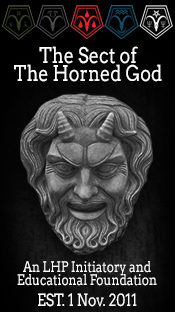At the Dawn
By Dimitri
Absence makes the heart go fonder.
Cravings and a feel of wanting pertain to daily life. The little growl in the stomach when passing rows of food when choosing what to buy and eat. These small fantasies about the gal/guy you see or thought naughty about. The things you would do when horny after a few days of abstinence (or by other means). That point when the computer needs fixing and reboot for the x-th time where you start talking to it in hopes it would work again. That small feeling of pain when you have to throw away that old baby-blanket or bear you have slept with. The reaction of calling out when hearing strange noises.
Small interactions that projects a self onto inanimate objects or intangible situations in order to get a certain sense of grip and hopes of manipulation and understanding. A proven effort as all of our ancestors applied the same methods. It gave growth to various cultures, beliefs and traditions. A survivalist instinct as it enables to see and discover certain patterns not immediately obvious to the mind. Yet, they give a certain handle.
This modus operandi is universally applied by all humans when confronted by an unknown. It is the reason why so many theories and ideas about aliens, spirits, ghosts and hidden authority are present.
It is hardwired in our brain that up to a certain point we start projecting traits to objects. Handle them as if in possession of a consciousness. Have this feeling of belonging and let it pass a variety of times through our brain to classify it under the well-known duality of positive/negative, black/white, good/evil.
The idea of assigning a “spirit”, which in this case implies a projection of self and/or conscious traits, to phenomena of objects, be they (in)animate or not, is what is being called “Animism”.
The thing itself is inborn survival-instinct but is central where it pertains to the evolution of culture and is the basis of many beliefs and spiritual practices. Indeed, any (Middle-)Eastern or Western belief, practice or tradition can be historically retraced to a person, or a group of persons, applying Animism and getting a grip on what otherwise was intangible and not prone to manipulation.
This assignment of spirit can be seen in all religions and practices. From the Aghori where the central idea is where Shiva pertains and is all. That the degration and taboos are in fact also part of Shiva and therefor considered “holy”, “divine”. It possesses “spirit”. Their practices, in not so long-winded terms, are veneration to this idea in order to evolve and reach a higher level of conscious or spiritual attainment.
We can look at every religion and draw red lines of common ground. Major distinctive factors are mostly geographical factors which in turn gave rise to different practices and traditions to appease “spirits”. Whereas native Americans developed dancing and chanting (as did African and Middle-Eastern tribes), Oriental traditions focused more on sound and burning of incense. The chanting and dancing traditions were more present in warm areas with lots of loose and dry soil. The movements ejected small sand particles in the air onto which water could condense and give rain as a result (if humidity was present). The Shamans of the tribes noticed these patterns and as such a variety of rain dances came to being. Dances to ward off “evil” spirits have a similar beginning. The more loud the dances and engulfing the fires present were, the less likely insects and predators would come to human settlements. To the primitive mind it was the good spirits “lending” their protection against the evil.
In Western and Oriental areas, practices were different. As we think “Oriental” we think of mountainous zones with monasteries on top of them. Things where avalanches took place, living was generally harsh and life not so abundant. Ritual practices implied the burning of incense, which spread a fragrance that could attract wildlife, and chanting in deep low sounds. The deep low sounds could be carried much farther than the high-pitched ones and served a multitude of purposes unknown to many. As deep low sounds carry much farther, travelers far away could learn of nearby settlements that provided shelter and/or if their destination was close. Deep low sounds also penetrate much better into materials. In the mountain regions, where avalanches endangered many a traveler or even the settlements, the carrying echoes kept loose snow moving to the lowest sides of the mountain. It helped downsizing the frequency of avalanches. To the common man, this was a manner and practice to stem the “spirits” and keep evil at bay.
Western tradition (or more generally, all those in forest or woodland) worked with sacrifices. There was less natural and geographical danger and plants and animals were/are abundant. Sacrifices could be seen as hunting methods. Sacrifices of blood were to attract predators that harmed settlements. The scent of meat and blood drew them near and gave an opening to remove the danger. The use of herbs and grains attracted insects and small critters which help creating fertile grounds. Feasts with abundant food and burning helped give back minerals to the soil. The fasting periods indicated the ending of reserves as they could no longer be held due to thawing and temperatures rising which made things rot and attract unwanted critters spreading diseases. Not following up was an invitation to “evil”.
As such, every practice can be placed correctly and retraced to their geographical origins and even to seasonal events. It is only in our modern world, bathing in luxury and comfort never seen before, that we have lost touch to the origins and effectiveness of traditions and practices. They became obsolete not because they never worked, they became obsolete as society evolved and such practice had become habit instead of function. Things such as prayer became window-dressing and misses its original power by reason it has been forgotten what its original purpose was (being meditation and reflection instead of veneration and worship). Prayer and meditation both originate from the idea of reflection. Whereas meditation is generally something internal, prayer is more external yet both serve the main purpose.The difference of the guy shouting at the world and the other one wanting to be left alone.
In modern times, people still indulge into Animism and seek out endeavors to still their stressed minds. They try to hold on to well-established customs but no longer want to be associated to their current forms. Indulgence in alternative traditions and making a mix of their own is the norm in modern times. In a certain sense, this appeal is more in line with our instincts. The practices in alternative traditions and practices, although watered-down and corrupted through philosophy, mysticism and personal liking, are still functional.
The self-entitled masters, wise-men and shamans of this current time have covered themselves in habit and the false authority of “tradition” but are none the wiser to their craft. Satanism in this regard laughs and points at the futility and arrogance displayed but is none the wiser. Modern Satanism, in this regard, searches for an authentic more while reflecting a caricature of what is. It challenges a wrong but neglects, or doesn’t know, what’s next or “the other”. Times are changing.





